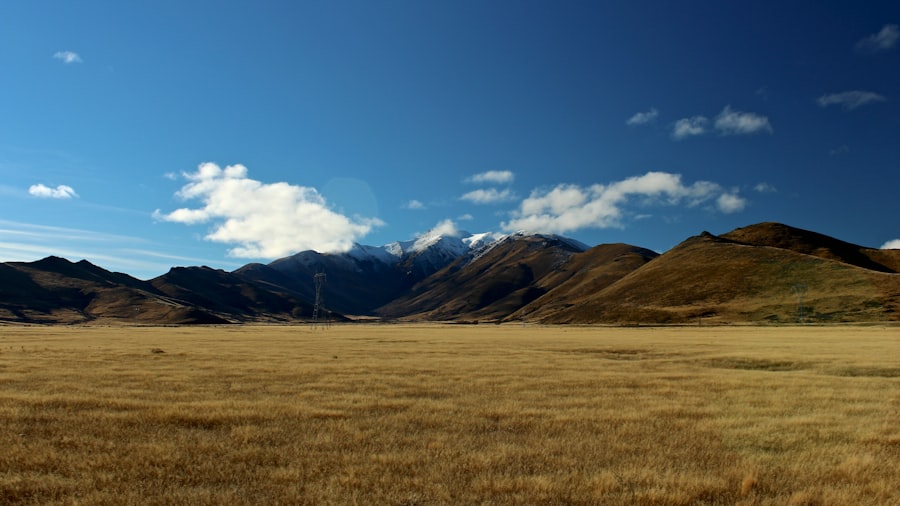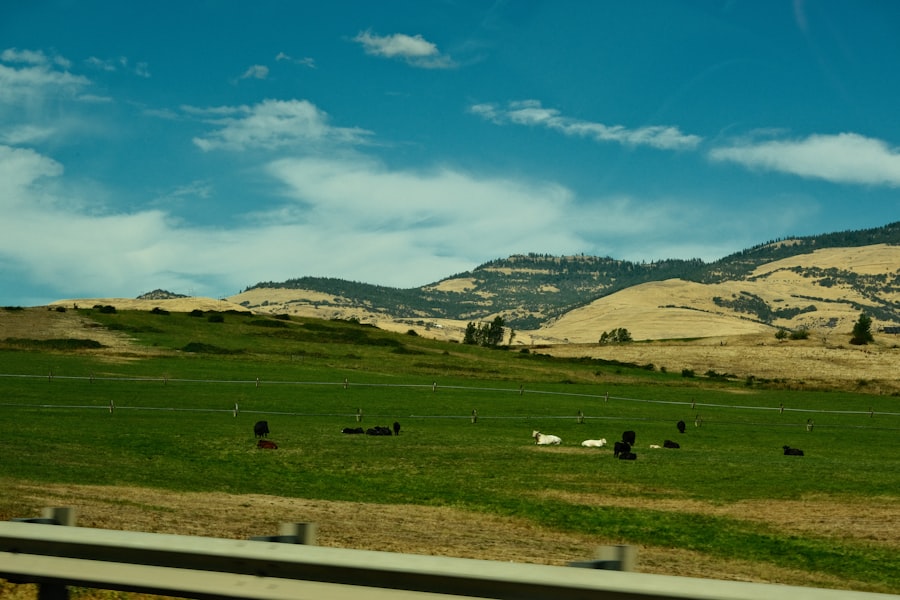Navigating the waters of the southern hemisphere presents unique challenges and opportunities, particularly when considering two of the most significant maritime routes: Magellan’s Pass and the Drake Passage. Both waterways serve as critical conduits for vessels traveling between the Atlantic and Pacific Oceans, yet they are distinct in their geographical features, historical significance, and navigational challenges. Understanding these two passages is essential for mariners, historians, and nature enthusiasts alike, as they encapsulate the rich maritime heritage and the breathtaking natural beauty of the region.
Magellan’s Pass, located at the southern tip of South America, offers a sheltered route through the archipelago of Tierra del Fuego. In contrast, the Drake Passage, situated to the south of Cape Horn, is known for its open waters and often tumultuous conditions. Each passage has its own unique characteristics that influence navigation, wildlife encounters, and the overall experience of those who traverse these storied waters.
As such, a comprehensive exploration of both passages reveals not only their individual merits but also their roles in maritime history and ecology.
Key Takeaways
- Magellan’s Pass and Drake Passage are two important navigational routes in the southern tip of South America, connecting the Atlantic and Pacific Oceans.
- Magellan’s Pass holds historical significance as the route used by Ferdinand Magellan during the first circumnavigation of the globe in the 16th century.
- The geography of Magellan’s Pass includes narrow channels, unpredictable weather, and strong currents, making navigation challenging yet offering a shorter route for ships.
- Drake Passage is known for its rough seas and strong winds, but it provides a direct route for ships traveling between the southern tip of South America and Antarctica.
- When choosing between Magellan’s Pass and Drake Passage, consider the historical significance, navigational challenges, and wildlife attractions of each route, as well as the safety precautions required for a successful journey.
History and significance of Magellan’s Pass
The historical significance of Magellan’s Pass cannot be overstated. Named after the Portuguese explorer Ferdinand Magellan, who first navigated the strait in 1520 during his circumnavigation of the globe, this passage has long been a vital route for explorers and traders alike. The strait allowed ships to avoid the treacherous waters around Cape Horn, providing a safer alternative for maritime travel.
Over the centuries, it has facilitated trade between Europe and Asia, contributing to the economic development of the region. Moreover, Magellan’s Pass holds cultural importance for the indigenous peoples of Tierra del Fuego. The Selk’nam and Yaghan tribes have inhabited these lands for thousands of years, relying on the rich marine resources provided by the surrounding waters.
The passage has served as a lifeline for these communities, allowing them to engage in fishing and trade with neighboring tribes. Today, the strait remains a symbol of exploration and resilience, reflecting both human ingenuity and the enduring connection between people and their environment.
Geography and characteristics of Magellan’s Pass

Geographically, Magellan’s Pass is characterized by its intricate network of islands and channels that create a labyrinthine waterway. The strait stretches approximately 570 kilometers (about 350 miles) from the Atlantic Ocean to the Pacific Ocean, with numerous islands dotting its course. The landscape is rugged and dramatic, featuring steep cliffs, dense forests, and glacial fjords that contribute to its stunning natural beauty.
The waters of Magellan’s Pass are generally more sheltered than those of the Drake Passage, making navigation somewhat easier for vessels. However, this does not mean that it is without its challenges.
Mariners must remain vigilant and prepared for changing conditions as they navigate through this remarkable waterway.
Advantages and disadvantages of navigating Magellan’s Pass
| Advantages | Disadvantages |
|---|---|
| Shorter route compared to going around Cape Horn | Narrow and treacherous waters |
| Scenic views of the Patagonian landscape | Unpredictable weather conditions |
| Historical significance as a major trade route | Potential for icebergs and strong currents |
Navigating Magellan’s Pass offers several advantages that make it an appealing choice for many vessels. One of the primary benefits is its relative protection from the open ocean. The strait’s sheltered waters provide a safer environment for ships, reducing the risk of encountering severe weather conditions that are often prevalent in more exposed areas.
Additionally, the scenic beauty of the surrounding landscape enhances the experience for sailors and passengers alike. However, there are also disadvantages to consider when navigating Magellan’s Pass. The strait’s complex geography can pose challenges for navigation, particularly for larger vessels that may struggle to maneuver through its narrow channels.
Furthermore, while the weather may be more stable than in the Drake Passage, it can still be unpredictable. Mariners must be prepared for sudden changes in conditions that could impact their journey.
History and significance of Drake Passage
The Drake Passage has a storied history that is deeply intertwined with exploration and maritime trade. Named after Sir Francis Drake, who sailed through these waters in the late 16th century during his circumnavigation of the globe, this passage has long been recognized as one of the most challenging maritime routes in the world. Its significance extends beyond mere navigation; it has played a crucial role in shaping our understanding of ocean currents and climate patterns.
The passage serves as a natural barrier between South America and Antarctica, making it a critical area for scientific research. The convergence of warm and cold ocean currents in this region creates a unique marine ecosystem that supports a diverse array of wildlife. As such, the Drake Passage has become a focal point for researchers studying climate change and its impact on marine life.
Its historical importance as a route for explorers has also made it a popular destination for adventure tourism today.
Geography and characteristics of Drake Passage

Geographically, the Drake Passage is defined by its vast expanse of open water that stretches approximately 800 kilometers (about 500 miles) between Cape Horn and Antarctica. This body of water is known for its deep channels and strong currents, which can create challenging conditions for navigation. The passage is often characterized by rough seas and high winds, making it one of the most formidable maritime routes in existence.
The unique geography of the Drake Passage contributes to its reputation as a challenging navigational route. The convergence of different oceanic currents creates unpredictable weather patterns that can change rapidly. Mariners must be well-prepared to face these conditions, as they can encounter everything from calm seas to towering waves within a short span of time.
Despite these challenges, many sailors are drawn to the Drake Passage for its raw beauty and sense of adventure.
Advantages and disadvantages of navigating Drake Passage
Navigating the Drake Passage presents both advantages and disadvantages that mariners must carefully weigh before embarking on their journey. One significant advantage is its direct route between South America and Antarctica, making it an essential passage for vessels traveling to research stations or engaging in tourism in Antarctica. The passage also offers unparalleled opportunities for wildlife observation, with numerous species of seabirds and marine mammals frequently spotted in these waters.
On the other hand, the challenges associated with navigating the Drake Passage are considerable. The open waters are notorious for their rough seas and unpredictable weather conditions, which can pose significant risks to vessels. Mariners must possess strong navigational skills and be equipped with reliable safety gear to handle potential emergencies.
Additionally, the passage’s remoteness means that assistance may not be readily available in case of trouble.
Comparison of navigational challenges between Magellan’s Pass and Drake Passage
When comparing the navigational challenges presented by Magellan’s Pass and the Drake Passage, it becomes clear that each route offers distinct obstacles that require careful consideration by mariners. Magellan’s Pass is characterized by its intricate geography, which includes narrow channels and numerous islands that can complicate navigation. While generally more sheltered than the Drake Passage, sudden weather changes can still create hazards for vessels attempting to navigate through its waters.
In contrast, the Drake Passage is defined by its open waters and strong currents that can lead to rough seas. The unpredictability of weather patterns in this region poses significant challenges for sailors who must be prepared to adapt quickly to changing conditions. While both passages require skillful navigation and an understanding of local weather patterns, the specific challenges they present differ markedly due to their geographical characteristics.
Wildlife and natural attractions in Magellan’s Pass and Drake Passage
Both Magellan’s Pass and the Drake Passage are renowned for their rich biodiversity and stunning natural attractions. In Magellan’s Pass, visitors can encounter a variety of marine life, including sea lions, dolphins, and numerous species of seabirds that thrive in this unique ecosystem. The surrounding landscape is equally captivating, featuring dramatic cliffs, lush forests, and glacial fjords that create a picturesque backdrop for any journey through these waters.
The Drake Passage is equally impressive when it comes to wildlife observation. This region serves as a vital feeding ground for many species of whales, including humpback whales and orcas. Additionally, seabirds such as albatrosses and petrels are commonly seen soaring above the waves.
The stark beauty of Antarctica looms on the horizon as vessels navigate through these waters, offering breathtaking views that captivate adventurers and nature lovers alike.
Safety considerations and precautions for navigating Magellan’s Pass and Drake Passage
Safety considerations are paramount when navigating either Magellan’s Pass or the Drake Passage. For those traversing Magellan’s Pass, it is essential to remain vigilant about changing weather conditions that can arise unexpectedly. Mariners should ensure their vessels are equipped with reliable navigation tools and safety gear to handle potential emergencies.
Additionally, understanding local tides and currents is crucial for safe passage through this complex waterway. In contrast, navigating the Drake Passage requires even greater caution due to its notorious reputation for rough seas. Mariners should be well-prepared with comprehensive safety plans in place before embarking on their journey through these challenging waters.
This includes having experienced crew members on board who are familiar with emergency procedures and ensuring that all safety equipment is readily accessible. Awareness of weather forecasts and ocean conditions is vital to mitigate risks associated with this formidable passage.
Choosing the best route for your journey
In conclusion, both Magellan’s Pass and the Drake Passage offer unique experiences for those seeking adventure on the high seas. Each passage presents its own set of advantages and disadvantages that must be carefully considered based on individual needs and preferences. For those prioritizing safety and scenic beauty, Magellan’s Pass may be the ideal choice due to its sheltered waters and stunning landscapes.
Conversely, adventurers seeking direct access to Antarctica or unparalleled wildlife encounters may find themselves drawn to the challenges presented by the Drake Passage. Ultimately, choosing between these two remarkable routes depends on various factors including vessel size, crew experience, desired destinations, and personal preferences regarding adventure versus safety. Regardless of which passage one chooses to navigate, both Magellan’s Pass and the Drake Passage promise unforgettable experiences filled with rich history, breathtaking scenery, and encounters with some of nature’s most magnificent creatures.
The exploration routes of Ferdinand Magellan and Sir Francis Drake are pivotal in the history of navigation, with each explorer charting significant passages that have since become crucial maritime routes. Magellan’s passage, known as the Strait of Magellan, was the first navigable sea route discovered that connected the Atlantic and Pacific Oceans, providing a more sheltered path compared to the open waters of the Drake Passage. In contrast, the Drake Passage, named after Sir Francis Drake, is the body of water between the southern tip of South America and Antarctica, known for its challenging sailing conditions. For a deeper understanding of these historical routes and their impact on global exploration, you can explore a related article on MyGeoQuest, which provides insights into the geographical and historical significance of these passages.
WATCH HERE: Drake Passage: Earth’s Deadliest Waters Revealed
FAQs
What is Magellan’s Pass?
Magellan’s Pass, also known as the Strait of Magellan, is a navigable sea route located in the southern tip of South America. It connects the Atlantic and Pacific Oceans, and is named after the Portuguese explorer Ferdinand Magellan who first navigated it in 1520.
What is the Drake Passage?
The Drake Passage is a body of water located between the southern tip of South America and the Antarctic Peninsula. It is known for its rough seas and strong winds, and is named after the English explorer Sir Francis Drake who sailed through it in 1578.
Which route is more commonly used for navigation?
The Drake Passage is more commonly used for navigation by ships traveling between the Atlantic and Pacific Oceans, particularly for scientific research expeditions and tourist cruises to Antarctica.
What are the main differences between Magellan’s Pass and the Drake Passage?
Magellan’s Pass is a narrower and more sheltered route compared to the Drake Passage, which is known for its rough and unpredictable weather conditions. The Drake Passage is also deeper and wider, making it more suitable for larger vessels.
Which route is safer for navigation?
In general, Magellan’s Pass is considered to be a safer route for navigation due to its more sheltered and predictable conditions. The Drake Passage, on the other hand, is known for its rough seas and strong winds, making it more challenging and potentially hazardous for navigation.
